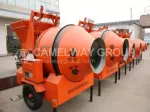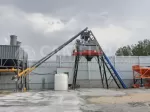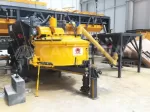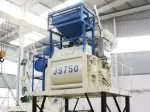The cause of the fault in the butterfly valve located at the top of the sock, which could not be determined. However, it is believed the following factors contributed to the severity of the incident:
1. There was no system of work to deal with an uncontrolled discharge of cement dust.
2. There were no dust masks available in the control room.
3. The design of the batching plant meant the control room was located almost immediately below the weigh hopper and was quickly engulfed by the discharging cement dust.
4. The design of the batching plant meant that workers were not in a position to operate the valve at the base of the silo from the ground.
5. The butterfly valve at the top of the sock was not the self closing type, requiring pneumatic pressure to both open and close.

Method to solve the dust pollution in the concrete batch plant:
To control the enterprises or personnel involved in batching, it is necessary to ensure that workers and other personnel will not be exposed to the hazards and risks of cement dust within the reasonable and feasible range, and take actions to eliminate or minimize the risk of uncontrolled dust release in their workplaces.
Exposure to cement dust can irritate eyes, nose, throat and the upper respiratory system. Skin contact may result in injury ranging from moderate irritation to thickening/cracking of skin to severe skin damage from chemical burns. Silica exposure can lead to lung injuries including silicosis and lung cancer.













0 Comment